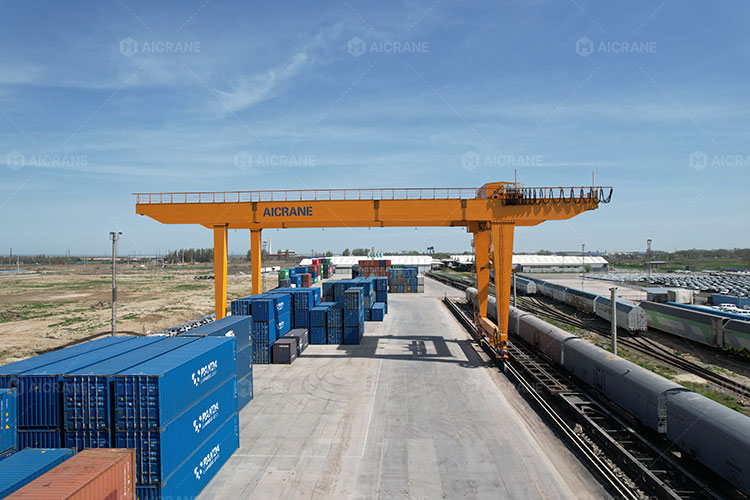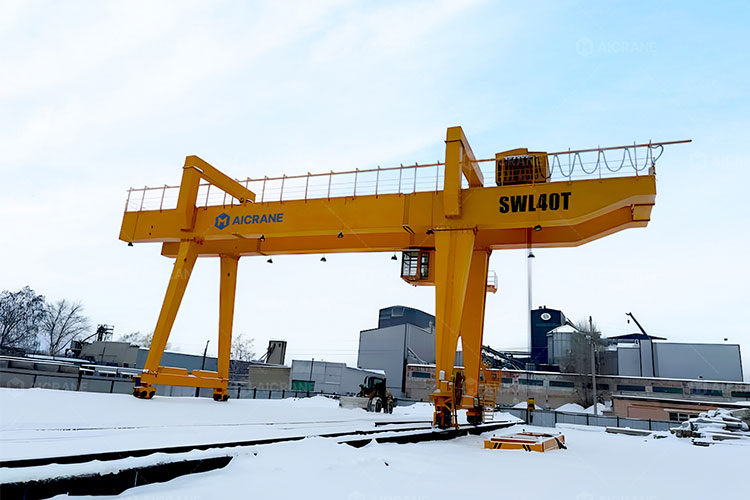Cantilever gantry cranes are widely used in material handling operations where space constraints and specific loading needs demand a versatile, extended-reach lifting solution. One of the most prominent applications of cantilever gantry cranes is in loading and unloading trucks and trains – especially when vehicle clearance, facility layouts, or operational limitations prevent the use of standard full-span gantry cranes. This article explores the key design considerations, challenges, and best practices in engineering cantilever gantry cranes specifically tailored for truck and rail loading operations.

Understanding the Cantilever Gantry Crane Concept
A cantilever gantry crane is a type of crane in which one or both ends of the crane girder extend beyond the supporting legs. This extension, or cantilever, enables the crane to cover areas outside the main runway – such as truck beds or railcars – without requiring full support underneath. It is ideal for:
-
Loading/unloading trucks parked outside the gantry span
-
Reaching over barriers or obstructions
-
Operating in confined yards or along railway tracks
When designed properly, cantilever gantry cranes offer unmatched flexibility, efficient space utilization, and reduced infrastructure requirements.
Key Design Objectives for Truck and Rail Loading
When designing cantilever gantry cranes for truck or train loading applications, engineers must address several core objectives:
-
Maximize Reach Without Compromising Stability
-
Support Efficient Load Handling Alongside the Gantry Runway
-
Ensure Safety in Both Static and Dynamic Operations
-
Provide Smooth, Controlled Movement Over Extended Arms
-
Accommodate the Vehicle Height and Loading Envelope
Let’s delve into these objectives and the associated design considerations.
1. Structural Design of the Cantilever Arm
The cantilevered section must be engineered to support overhanging loads without causing excessive deflection or instability. Several factors influence the design:
-
Length of Cantilever: The longer the extension, the greater the bending moment at the connection point. In typical applications, cantilever lengths range from 2 to 7 meters depending on truck or train positioning.
-
Load Characteristics: Engineers must consider whether the gantry crane for sale will lift full loads directly over the cantilever or only transfer them to the supported area. Full-load handling over the arm demands a more robust structure.
-
Girder Type: Box girders or trussed beams are often used for better strength-to-weight ratio, minimizing deflection while managing the weight of the extended structure.
-
Counterbalancing: In some cases, weights or structural extensions on the opposite side of the girder are used to offset the load on the cantilever.

2. Foundation and Support Frame
While gantry cranes are typically mobile or rail-mounted, cantilever designs introduce asymmetric loading, which puts extra stress on the support frame and foundation. Design strategies include:
-
Wider Leg Base: A broader leg stance improves stability and reduces tipping risk when handling loads on the cantilever.
-
Anchoring Systems: Fixed rail mounted gantry crane for sale may require additional anchoring or reinforced foundations to prevent overturning forces.
-
Mobile Cranes: For rubber tyred gantry crane for sale, axle design and tire load ratings must account for the shifted center of gravity.
3. Load Travel Path and Vehicle Alignment
Proper alignment of the cantilever crane with truck or rail positions is crucial. The crane must be able to:
-
Position Loads Precisely: The trolley should have enough travel along the cantilever arm to reach the far end of the truck bed or railcar.
-
Accommodate Different Vehicle Heights: Adjustable hoisting height and variable lifting speeds help accommodate container trucks, flatbeds, or covered wagons.
-
Handle Lateral Offsets: In rail applications, cars may not be perfectly aligned; the crane must be able to compensate for misalignment or shifting positions.
4. Motion and Control Systems
A well-designed motion system ensures both safety and operational efficiency. Key design choices include:
-
Variable Frequency Drives (VFDs): These provide smooth acceleration and deceleration, critical when operating over an extended cantilever arm to minimize sway.
-
Anti-Sway Technology: Advanced cranes may include active anti-sway systems to stabilize loads when moving over the cantilever extension.
-
Remote Controls: Operators benefit from remote or wireless controls to position the crane precisely when loading/unloading trucks or trains.
-
Limit Switches and Sensors: These prevent over-travel of the hoist or trolley and help protect the crane and vehicles below.
5. Wind and Weather Considerations
Outdoor cantilever gantry cranes must be designed for environmental factors, particularly wind:
-
Wind Load Calculations: The cantilever section behaves like a sail, especially when unloaded. Engineers must design the structure and anchoring to resist wind forces.
-
Storm Brakes and Tie-Downs: In areas with high wind risks, storm protection mechanisms are essential.
-
Corrosion-Resistant Materials: Galvanized or coated components are used to extend life in rail yards or logistics hubs with harsh environments.
6. Safety and Compliance
Safety features are a non-negotiable part of the design:
-
Overload Protection: Load cells and limiters prevent hoisting beyond rated capacity.
-
Emergency Stop Functions: Easily accessible stop buttons and fail-safe features are built into control systems.
-
Warning Alarms and Lights: Visual and audible alerts notify workers during operation to avoid accidents near trucks or tracks.
-
Operator Training and SOP Integration: Even the best crane design requires proper usage protocols for safe operation near vehicles.
7. Customization Based on Application
Each truck or train loading scenario may have unique requirements. Customized design parameters include:
-
Crane Span and Height: Based on vehicle layout and stacking requirements
-
Trolley Type: Monorail trolleys, dual-rail trolleys, or articulated solutions
-
Cantilever Length: Adjusted for vehicle width and clearance requirements
-
Hoisting Mechanism: Wire rope hoist for high-capacity, chain hoist for light-duty
-
Portability Needs: Some applications benefit from foldable or demountable cantilever designs
Conclusion
Cantilever gantry cranes are powerful tools for streamlining truck and rail loading operations, especially in environments where standard gantry cranes fall short. However, their design is far from one-size-fits-all. Engineers must carefully consider load dynamics, structural strength, motion control, and safety when tailoring a cantilever solution for such applications.
From logistics hubs and distribution centers to manufacturing plants and intermodal terminals, cantilever gantry cranes help optimize material flow, improve loading efficiency, and reduce manual handling risks. With proper design and customization, they become a vital asset in modern transportation and logistics infrastructure.